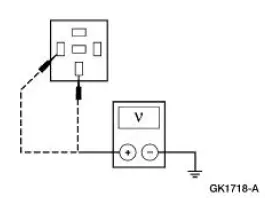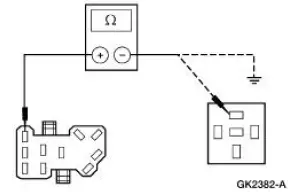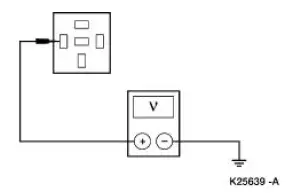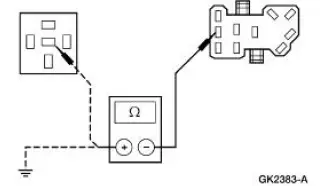Ford Mustang (1999-2004) Service Manual: Turn Signal and Hazard Lamps
Refer to Wiring Diagrams Cell 90 , Turn/Stop/Hazard Lamps for schematic and connector information.
Special Tool(s)
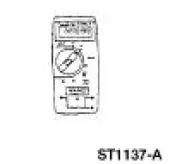 |
73 III Automotive Meter 105-R0057 or equivalent |
Inspection and Verification
1. Verify the customer concern.
2. Visually inspect for the following obvious signs of mechanical and electrical damage.
Visual Inspection Chart
| Mechanical |
Electrical |
|
|
3. If an obvious cause for an observed or reported concern is found, correct the cause (if possible) before proceeding to the next step.
4. If the cause is not visually evident, verify the symptom and refer to the Symptom Chart.
Symptom Chart
| Condition | Possible Sources | Action |
|
|
|
|
|
|
|
|
|
|
|
|
|
|
|
Pinpoint Tests
PINPOINT TEST J: THE TURN SIGNAL LAMPS ARE NEVER ON
| Test Step | Result / Action to Take |
| J1 CHECK THE VOLTAGE TO THE ELECTRONIC FLASHER | Yes GO to J2 . No REPAIR the circuit in question. TEST the system for normal operation. |
|
|
| J2 CHECK CIRCUIT 44 (LB) | Yes GO to J3 . No REPAIR the circuit. TEST the system for normal operation. |
|
|
| J3 CHECK THE CONTINUITY OF THE MULTIFUNCTION SWITCH | Yes INSTALL a new electronic flasher. TEST the system for normal operation. No INSTALL a new multifunction switch. REFER to Section. TEST the system for normal operation. |
|
PINPOINT TEST K: THE HAZARD FLASHER LAMPS ARE NEVER ON
| Test Step | Result / Action to Take |
| K1 CHECK THE VOLTAGE TO THE ELECTRONIC FLASHER | Yes GO to K2 . No REPAIR the circuit. TEST the system for normal operation. |
|
|
| K2 CHECK CIRCUIT 385 (WH/RD) | Yes GO to K3 . No REPAIR the circuit. TEST the system for normal operation. |
|
|
| K3 CHECK THE CONTINUITY OF THE MULTIFUNCTION SWITCH | Yes INSTALL a new electronic flasher. TEST the system for normal operation. No INSTALL a new multifunction switch; REFER to Section. TEST the system for normal operation. |
|
 Stoplamps
Stoplamps
Refer to Wiring Diagrams Cell 90 , Turn/Stop/Hazard Lamps for
schematic and connector information.
Special Tool(s)
73III Automotive Meter or
equivalent
105-R0057
Inspection and Ve ...
 Parking, Rear and License Lamps
Parking, Rear and License Lamps
Refer to Wiring Diagrams Cell 92 , Exterior for schematic and connector
information.
Special Tool(s)
73 III Automotive Meter or
equivalent
105-R0057
Inspection and Verification
1 ...
Other materials:
Engine (Assembly)
Special Tool(s)
Guides, Connecting Rod
303-442 (T93P-6136-A)
Installer, Crankshaft Rear Oil
Seal
303-518 (T95P-6701-DH)
Installer, Crankshaft Rear Oil
Seal
303-516 (T95P-6701-BH)
Installer, Crankshaft Re ...
Safety Belt Buckle - Rear Seat
Removal
1. Remove the rear seat cushion.
2. Remove the bolt and the safety belt buckle.
Installation
1. NOTE: LH and RH rear seat safety belt buckles have different anchor
plates. Make sure correct
part is used when installing buckle and anchor plate in th ...
Tracing Powder
Tracing powder is used to check both the uniformity of contact and the
tension of a seal against its
sealing surface. These tests are usually done when a suspected air leak/noise
appears to originate
from the seal area or during the alignment and adjustment ...

